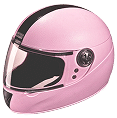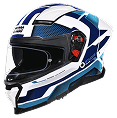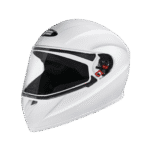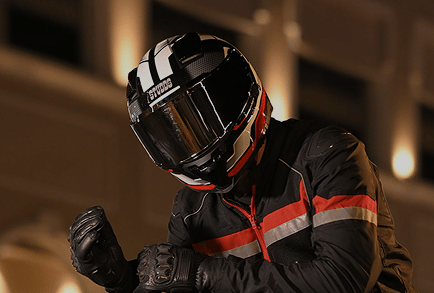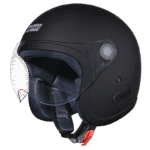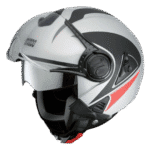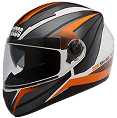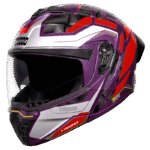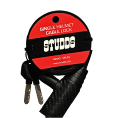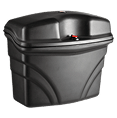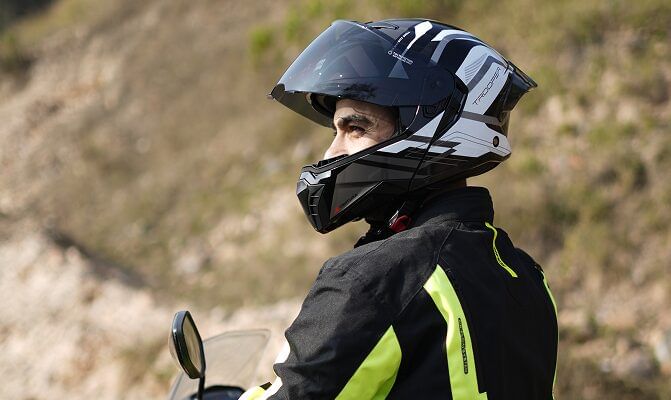
HELMET CARE
- Please ensure that your helmet outer shell does not come in contact with any petroleum/gasoline product.
- Do not hang your helmet on the mirror/handle bar of the two-wheeler.
- Do not repaint your helmet. repainting of helmet can reduce impact absorption capacity.
- Do not use dark/tinted visors in poor visibility conditions.
- Do not modify your helmet by drilling holes in the outer shell.
- Do not replace/remove any of the original parts of your helmet.
ALWAYS REMEMBER THE NUMBER ONE RULE
A. CHECK YOUR HELMET FOR PROPER FIT
With the helmet securely fastened on your head, check the following points:
Check whether the helmet lining fits snuggly around your head
Check to make sure that there is no space between your forehead and the inner lining, where you can insert your fingers.
Check that the cheek pads are in contact with your cheeks.
Check to make sure that there is no space between your forehead and the inner lining, where you can insert your fingers.
Hold the helmet with your hands on both sides, without moving your head try to move the helmet up and down and side to side – Picture 3 & 4. You should feel pressure on your face and on your head, as you try to move the helmet around easily, the helmet is larger than your head size and you need to try a smaller size.
B. HOW TO WEAR A HELMET
With the helmet securely fastened on your head, check the following points:
Hold the ends of the chin strap and pull them towards outside see
Wear the helmet on your head see, Fasten well the chin strap.
C. CHECK CHIN STRAP FOR FASTENING
With the helmet on your head & chin strap secured, check the following points:
- Try to pull the chin strap away from your chin . If then chin strap moves or loosens, the chin strap is either too long or incorrectly adjusted.
- Readjust the length of your chin strap, fasten it and check again until you have a proper fit and the helmet is securely fastened.
- Hold the helmet from the back & try to pull the helmet off your head as indicated by the arrow in Picture 7. If the helmet starts to come off , the chin strap is not sufficiently well tightened and or helmet is too large.
D. ABOUT VISOR (IF PROVIDED)
With the helmet on your head & chin strap secured, check the following points:
- To maintain a good field of vision, formation of scratches and accumulation of dirt on the visor screen shall be avoided.
- No organic solvents or material containing organic solvents such as metal polish shall be used to clean the visor.
- A soft sloth shell be used to wipe the visor for removing dust, dirt etc.
E. DISPOSAL OF HELMET
- Material used in shell protective liner and visor are recyclable in nature. Once helmet usage is over, dispose it by giving it to near most registered / authorised agency for recycling.

MAINTENANCE AND CLEANING
- Use only lukewarm water and mild soap to safely clean your helmet and visor, and then let it dry at room temperature away from direct sunlight and/or heat sources. Soiled areas can be gently cleaned using a soft toothbrush or a cotton swab and soap water.
- Helmet and visor can be seriously damaged by some common cleaning solutions without the damage being visible.
- Do not paint or apply stickers or any solvents to this helmet as it may irreparably damage the helmet, modify optical properties, reduce mechanical protection or weaken the visor protective treatment.
- Visors with the marking indicating "daytime use only" are not suitable for use in the dark or in conditions of poor visibility.
 Wishlist
Wishlist
 Track Order
Track Order



